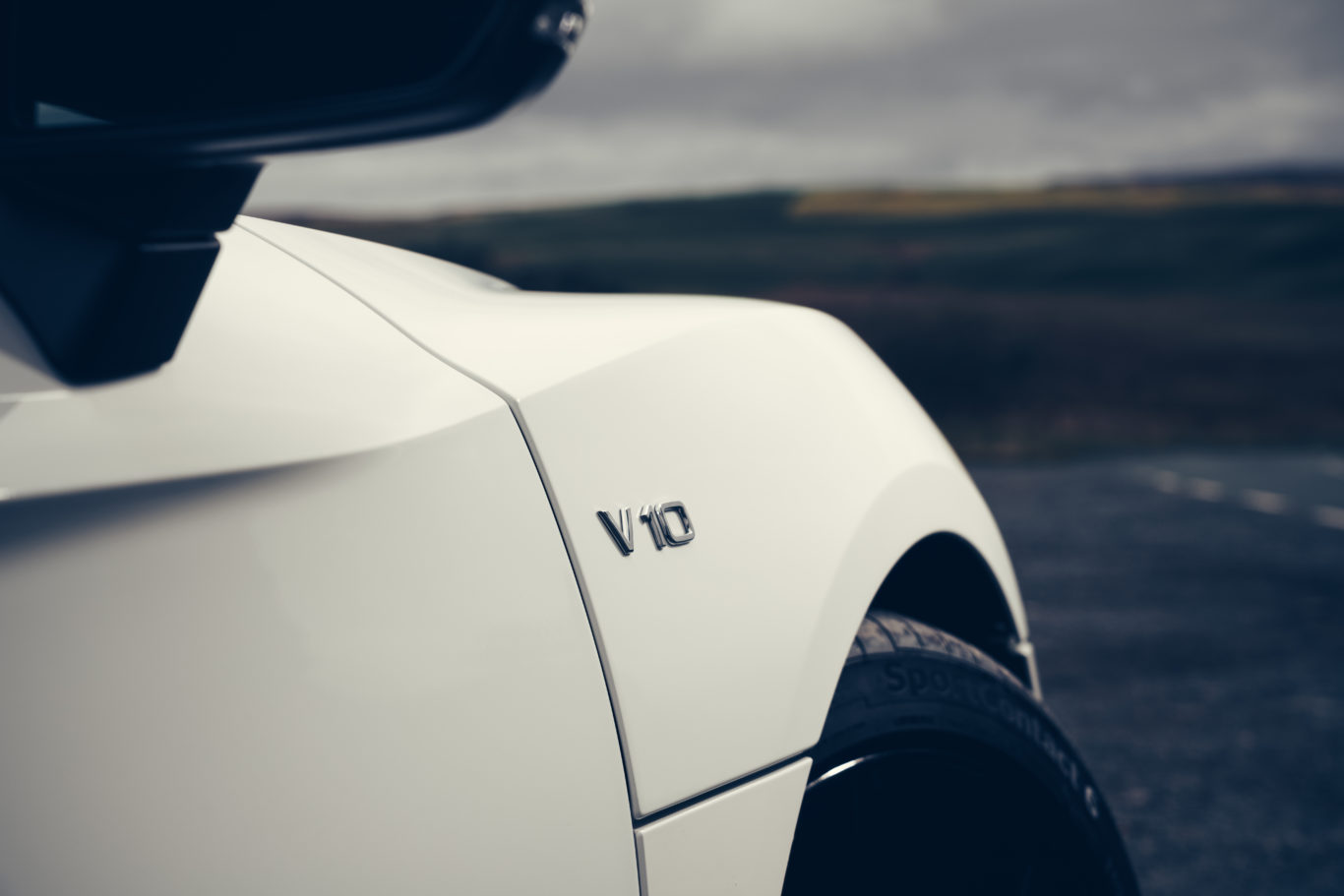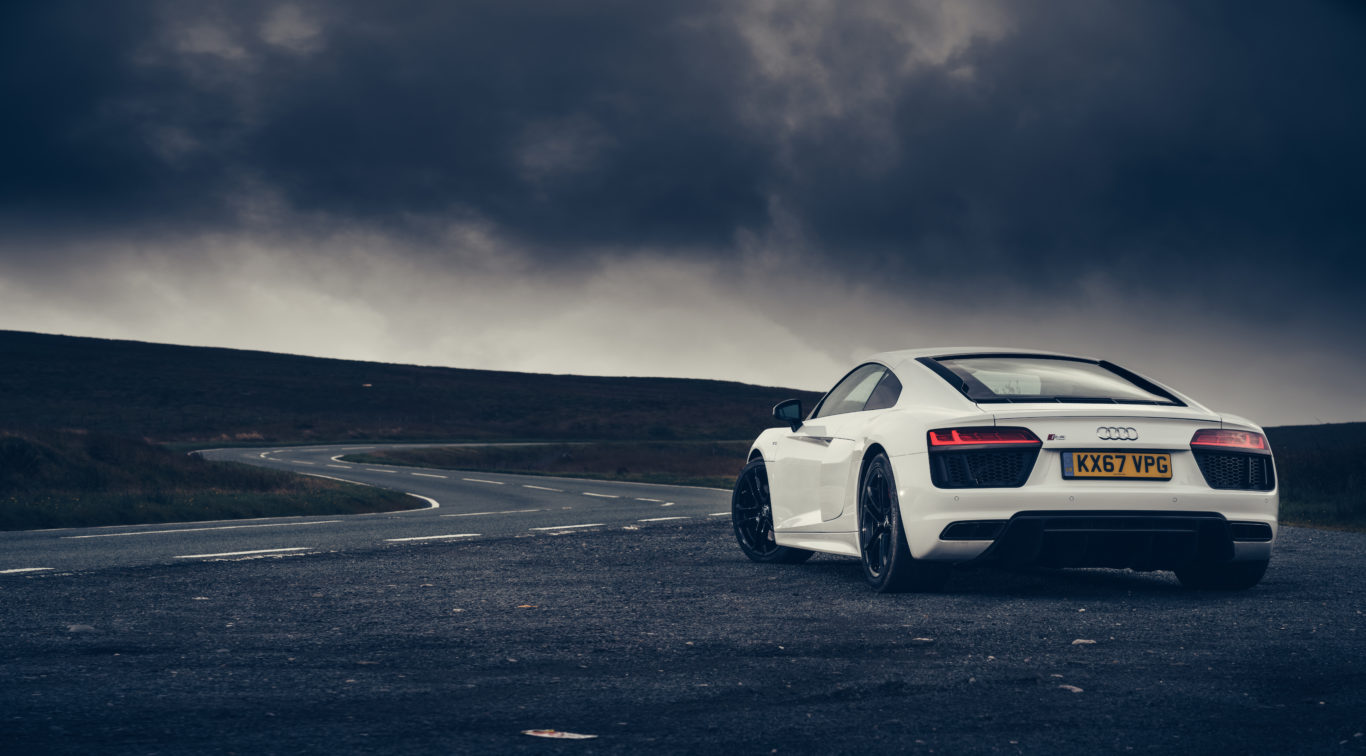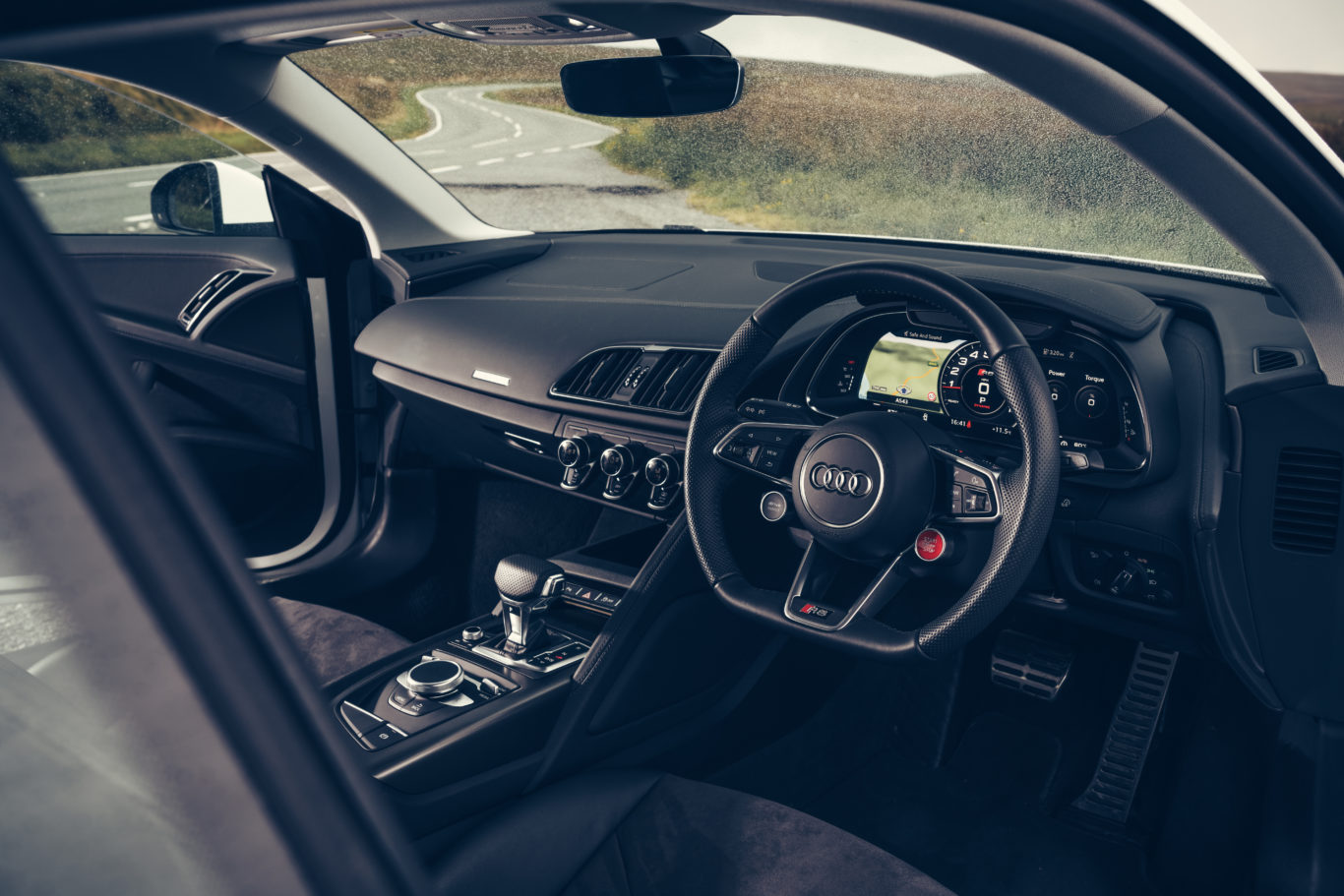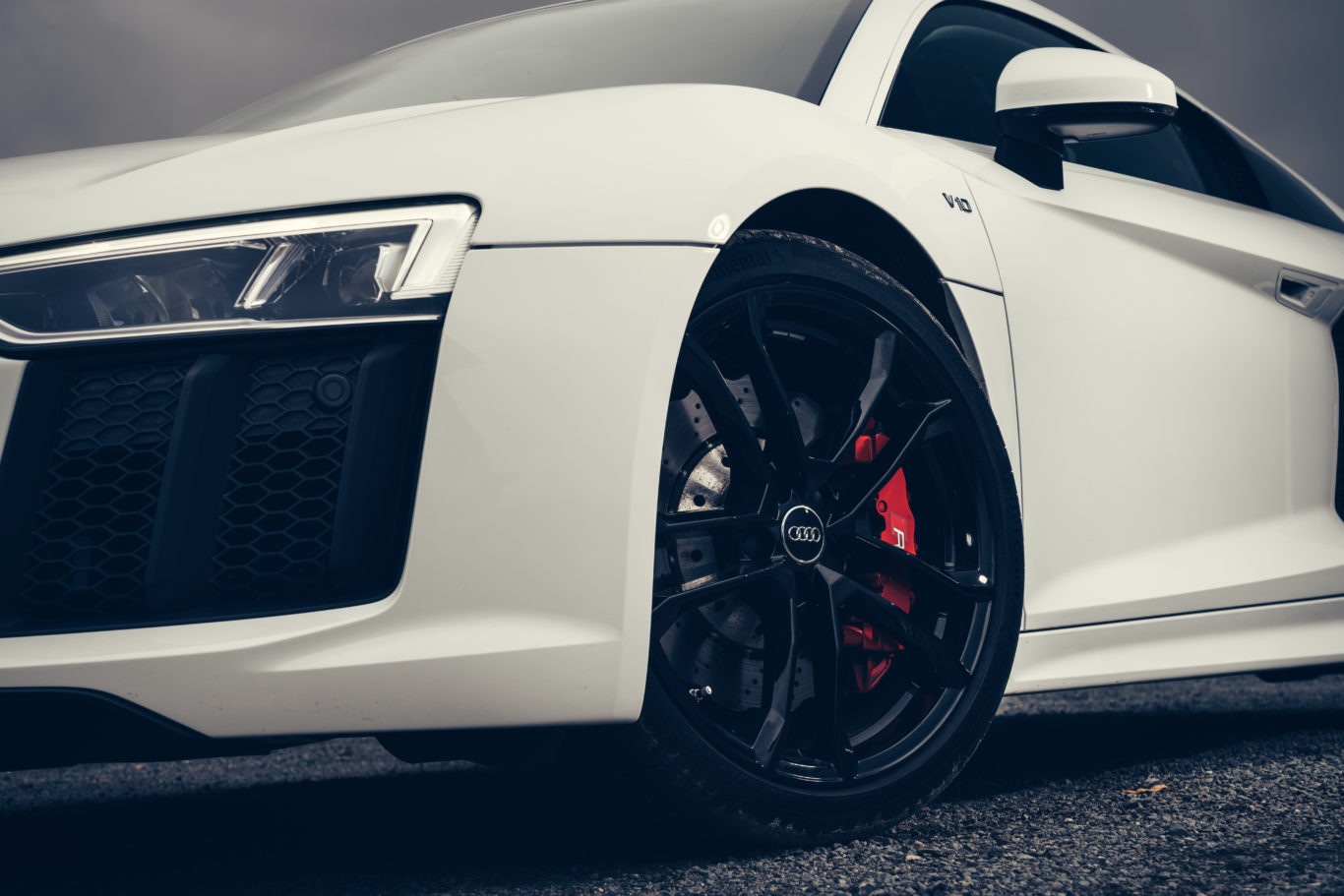
Rules are meant to be broken, or so the old adage goes. When you’re as sensible and Germanic as an Audi engineer though, you can’t expect these things to happen overnight – which is presumably why it’s taken so long for them to get here. Believe it or not, the car you’re looking at is something almost revolutionary for the chaps from Ingolstadt: the first rear-wheel-drive Audi in more than 40 years.

Four-wheel drive has been at the heart of Audi’s performance cars ever since the famous Quattro rally car of the 1980s. The RSes – 2, 4, 5, 6 and 7 – that followed all kept to the same recipe, usually with astonishing results. So the question is, why even bother changing that now?
The first thing to remember is that this isn’t just an option that’s available at a regular Audi dealership. As the ‘1 of 999’ badge on the dash dutifully reminds us, fewer than 1,000 examples of the R8 RWS will be made.
In other words, Audi isn’t keen for this rear-wheel-drive thing to become the norm. Secondly, as handy as it is having all four wheels doing the driving, the hardware to take care of it has some disadvantages.
By lopping off the bits that drive the front wheels – ie, the centre and front differentials, propshaft and so on – Audi has shaved 50kg off the weight of a standard R8. Finally, Audi might not be familiar with sending power exclusively to the back of the car, but the R8’s Italian platform-mate – the Lamborghini Huracan – is no stranger to this sort of thing. So what’s the RWS for then?

Audi says it’s a genuine attempt at courting proper driving enthusiasts: people who want a little extra edge from its £100k+ supercar. Despite this though, not a lot has actually changed from the standard car – and it shows.
Cute limited-run dashboard badge aside, the RWS gets the same interior as the standard car, and it’d take a serious Audi nerd to spot the differences externally too. The dual-clutch automatic gearbox is the same, while its 5.2-litre V10 is carried over unchanged as well.

Unlike an RS-badged Porsche or a CS-spec BMW, there’s been no real attempt made to shed any extra weight either. No removal of soundproofing, no uncarpeted floor, no extra bits of carbon fibre.
Some would argue that kind of behaviour would be against the R8’s ethos in the first place. It’s not meant to be a stripped-out, hardcore track- day special after all: it’s a supercar you can use every day, so why shouldn’t it have comfy seats, Alcantara trimmings and a Bose stereo?

That’s all well and good, but aside from some tweaked dampers and a stiffer anti-roll bar, very little has changed at all.
Put bluntly, Audi simply chops the front half of the drivetrain off and calls it a day.
This all has the effect of making the RWS feel… largely like a normal R8, to be honest. Anyone expecting a fire-breathing, tank-slapping, sideways monster of a car from a company as safe as Audi is bound to be disappointed, but it’s actually impressive in itself that the RWS grips as keenly as it does, even without the famous Quattro badge on the grille.
Even on the sodden roads of Snowdonia, it never feels anything close to scary – just entirely predictable, with only an overly zealous ESP system jumping at slippery T-junctions.

This does rather raise the question of why you’d pick this over a regular R8. Some will buy for the exclusivity: a one-in-a-thousand supercar, and arguably a one-in-a-million Audi as far as its drivetrain is concerned. If the potential of a future classic isn’t enough, Audi has kindly made the RWS a fair chunk cheaper than the standard car as well: around £14,000 less in fact.
What we shouldn’t forget is that, rear-wheel drive or not, the R8 is still a formidable supercar, and something of a dying breed.
It can’t be long before emissions regulations kill off the fabulous 5.2-litre V10 altogether, and that will be a sad day.
Tearing around the hills of north Wales with 10 cylinders wailing away less than a foot behind you, it’s hard to imagine any other road car offering such a warm and fulfilling soundtrack.

Keep this in mind and the RWS sort of starts to make sense. Think of it not as a stripped-out, track-focused version of the R8 – because it isn’t – but as a last hurrah for a big-block, naturally aspirated mid-engined supercar that probably won’t be around for much longer.
The low-slung driving position still feels special, the steering and brakes are still beautifully crisp, and Audi’s formidable S-Tronic gearbox still remains one of the best, letting you make the greatest possible use of the sheer lump of power from that peach of an engine.
The feeling that doesn’t go away though is that not only is the standard car just as fun, but it’s more confidence-inspiring and arguably more usable to boot.
The RWS feels like a missed opportunity: a chance to give the R8 a proper send-off before an era of hybridisation is ushered in. That’s not to say it’s bad – it’s every bit as fabulous to drive as the standard car. What it isn’t, unfortunately, is any better – and that feels like a crying shame.

Enjoy the convenience of having The Sunday Post delivered as a digital ePaper straight to your smartphone, tablet or computer.
Subscribe for only £5.49 a month and enjoy all the benefits of the printed paper as a digital replica.
Subscribe